This is a guest post written by Cassie Schmitt, one of the i-team interns.
As you open the door to the Syracuse Office of Innovation, your eyes catch the brightly painted walls, a sitting area with literature on cities and data science, the chalkboard wall covered in names and drawings. To your right is a conference room, decorated wall to wall in gigantic white post its; layered in smaller multicolored ones. Each note contains a problem, solution, or idea. In the final room sits the team of dedicated city innovators, busy working on improving economic opportunity in Syracuse.




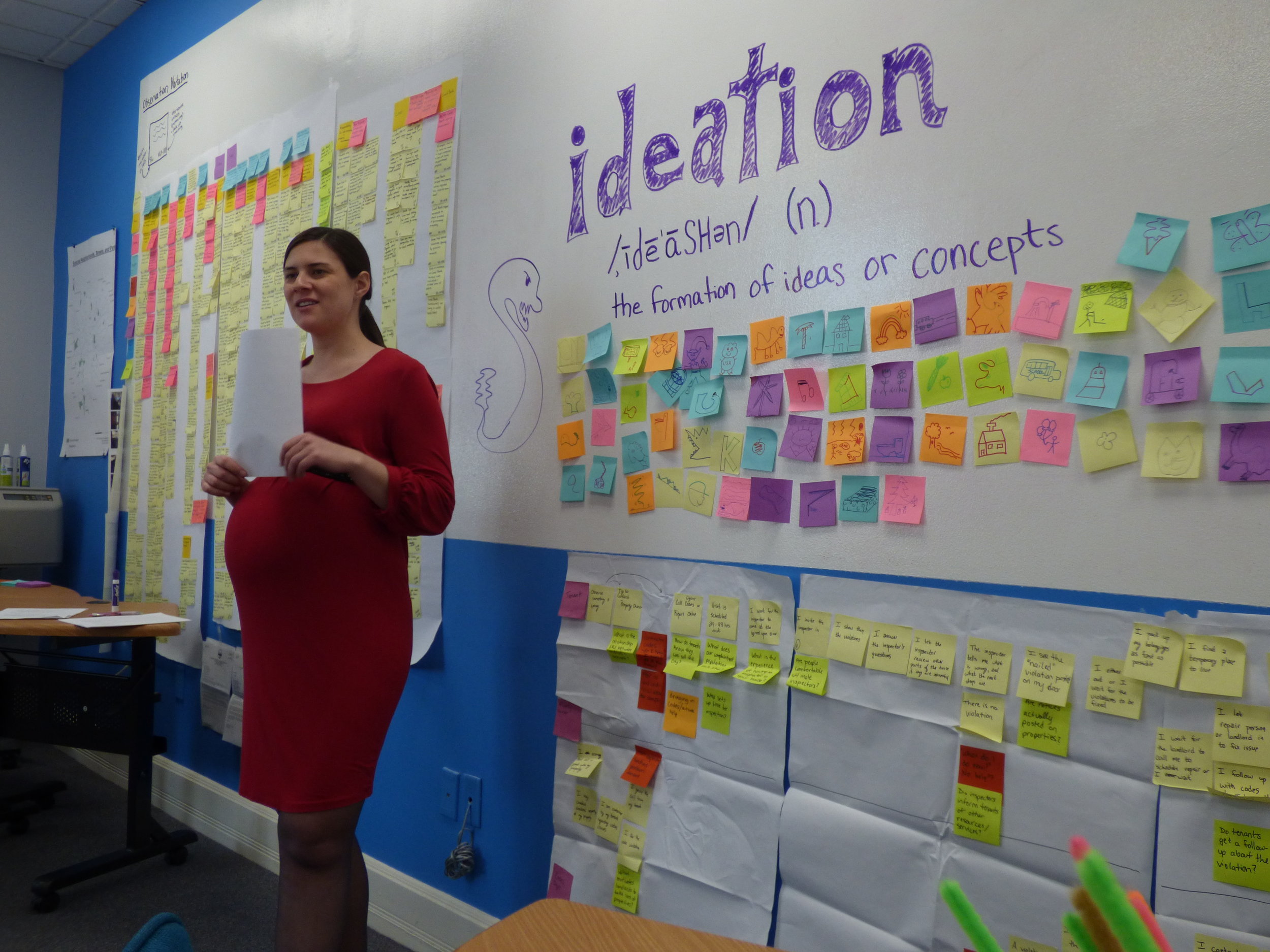
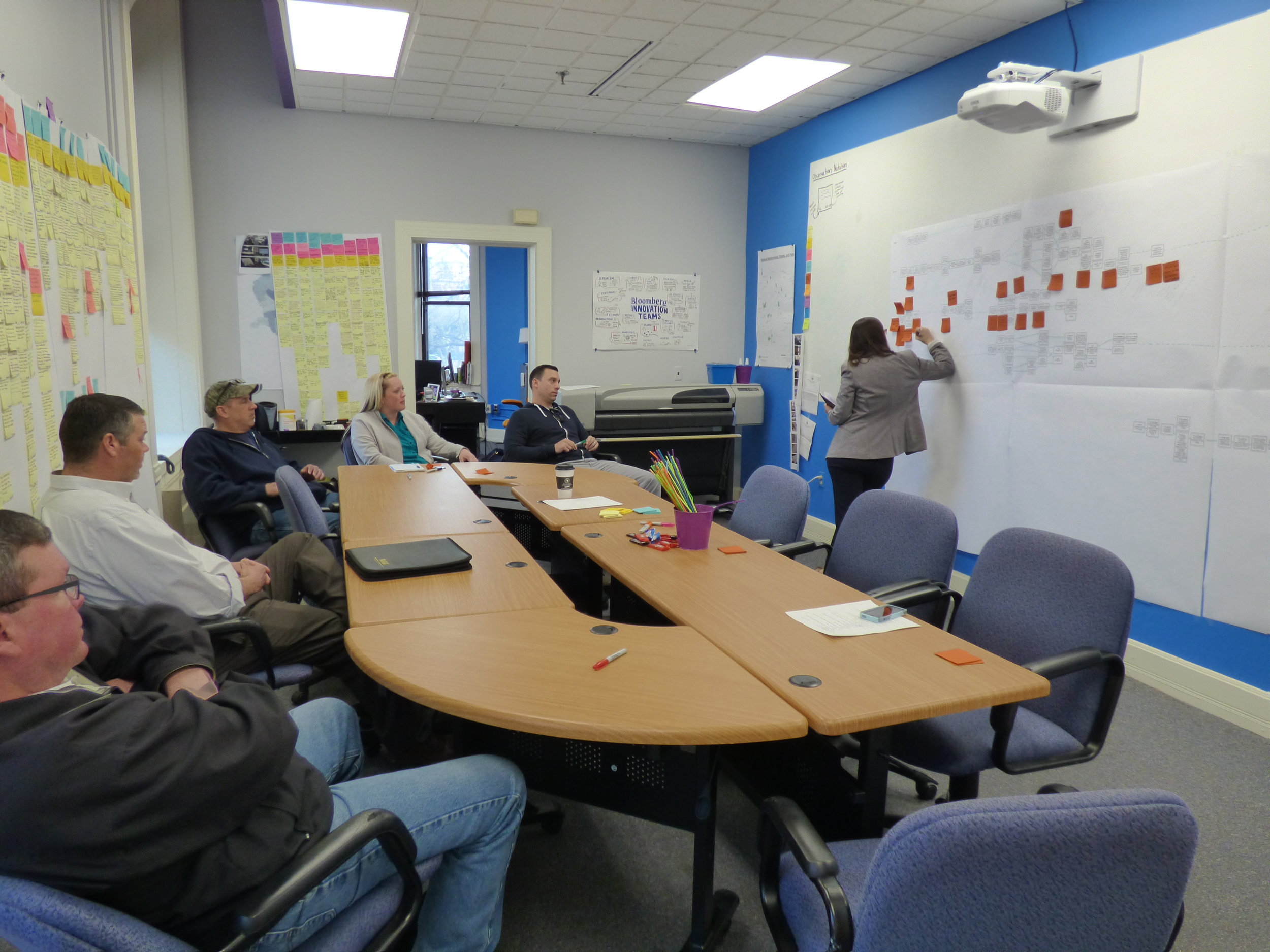
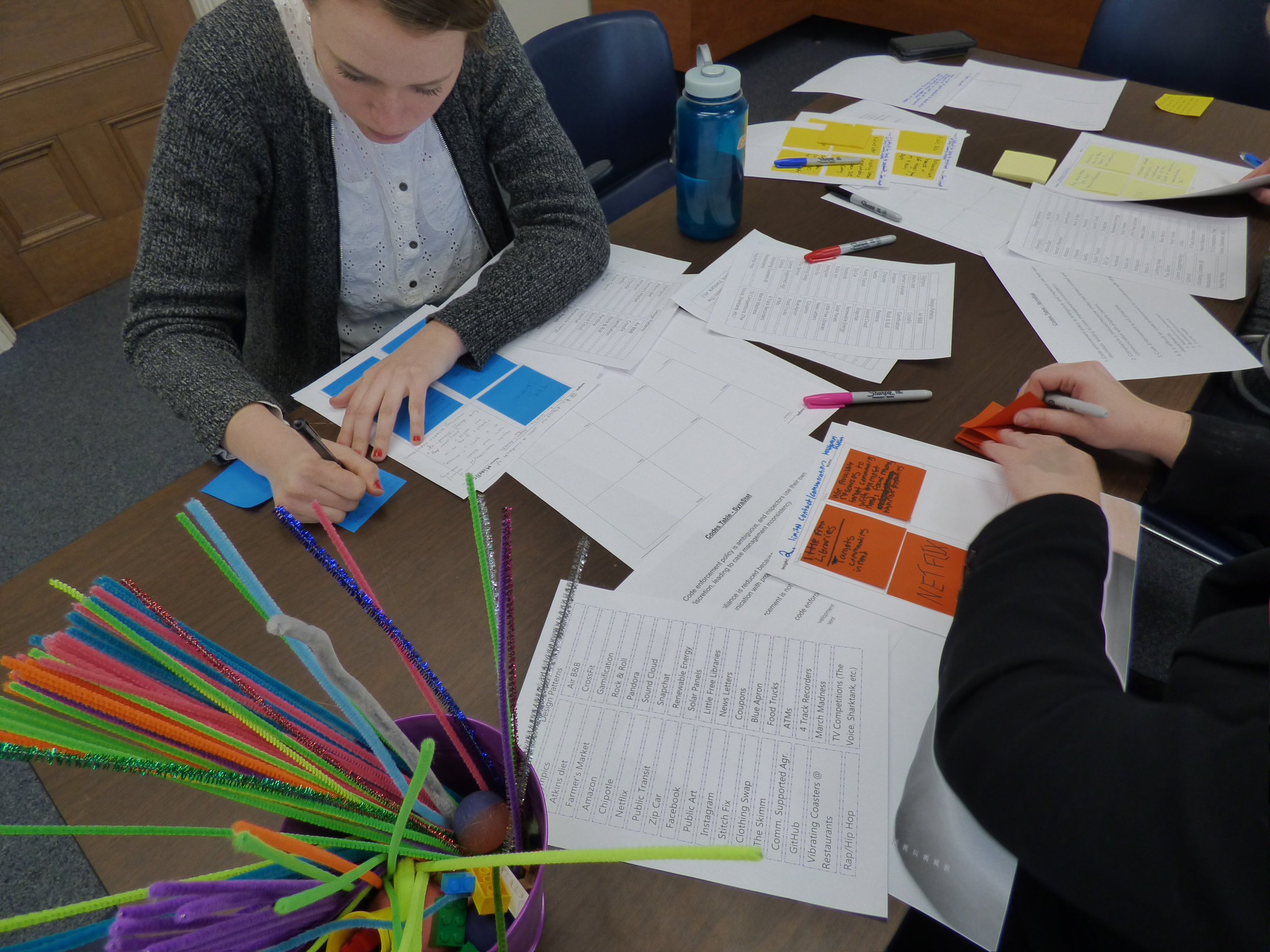
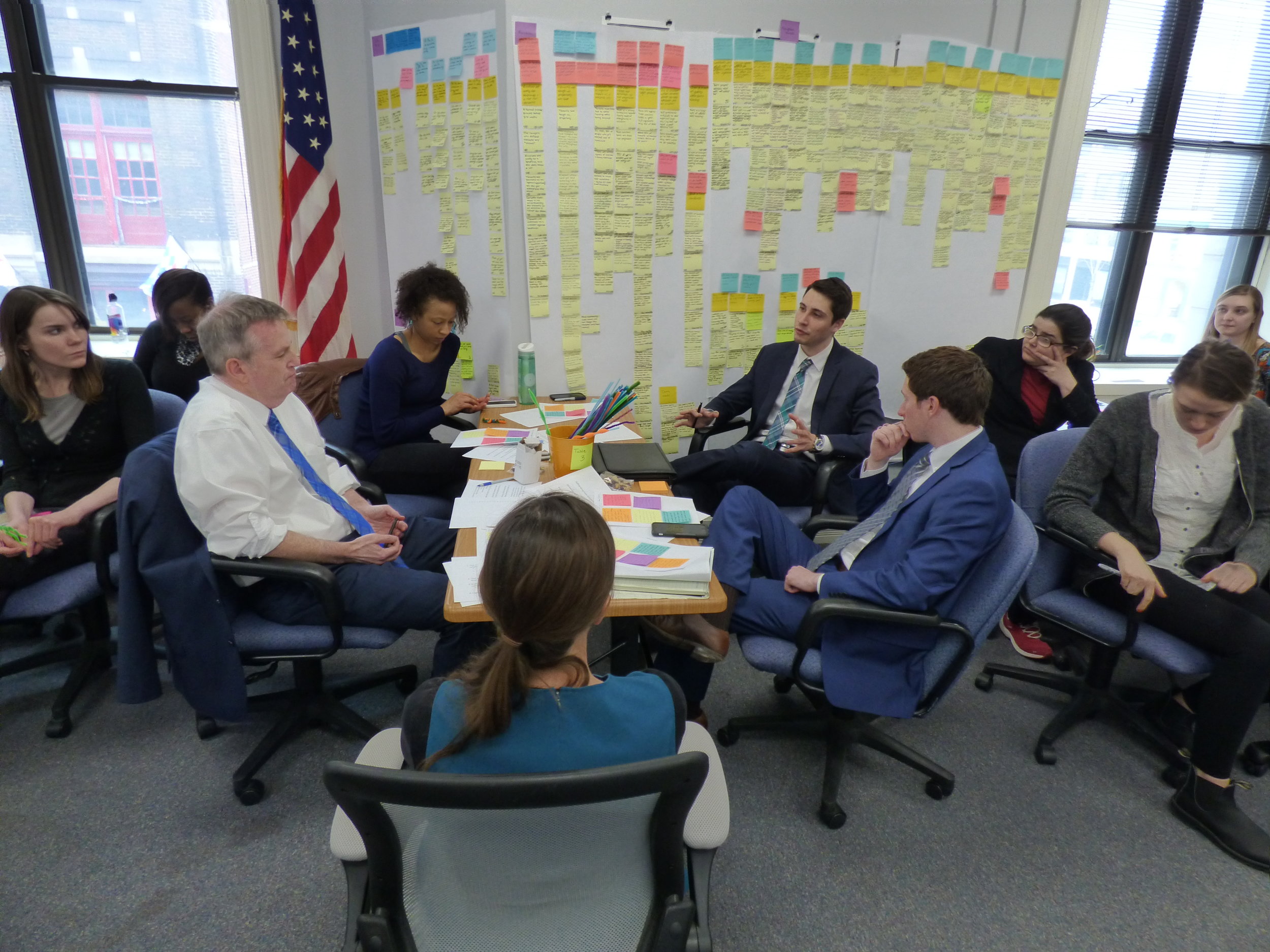
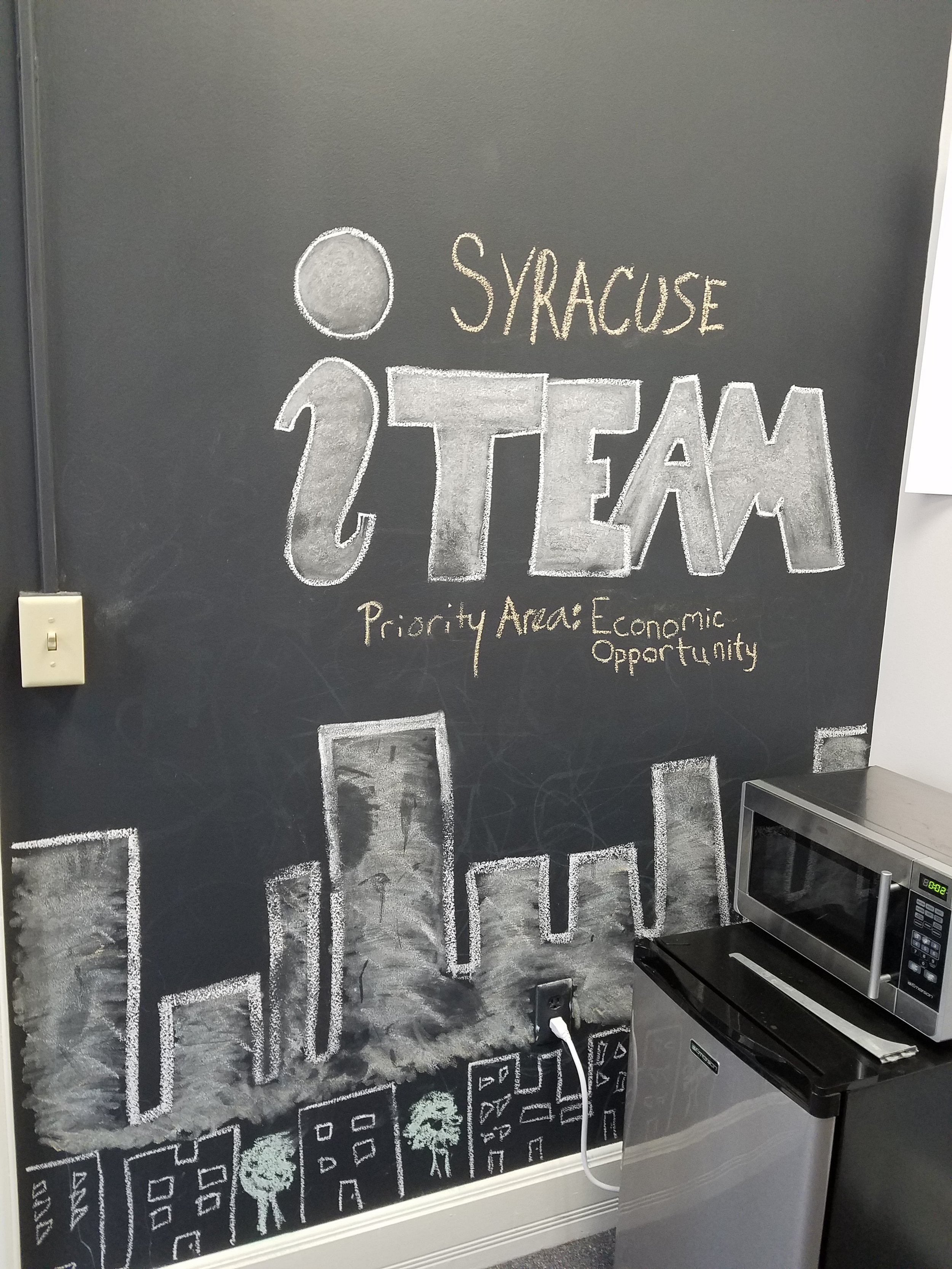
You might also encounter some extra innovators, entering data on a laptop, writing a report, or researching best practices in other cities across the world. These are the i-team interns, who dedicate their time to the team every week. The i-team hosts students looking to gain experience in a variety of fields: geography, information management, local government, and process management. The interns each see a unique part of what it is the i-team does. So I asked what their first impressions were:
“The first time I walked into the office, you could really feel the energy immediately with all the color and pipe cleaners. I thought it was an incubator, or think tank…when [the team] explained the process to me, you could see their enthusiasm for the work and it made me excited to work with them.” -Josh
“I remember how surprised I was by the office, but the team also. It was definitely unexpected to see a group of people not much older than myself, taking action to combat Syracuse’s tough problems” -Jon
“Meeting the team and having them explain the process to me was really interesting, but confusing too. It took me a few weeks to get a grasp on how the overall steps translated to their work.” -Emma
For the past year and a half, I’ve watched the i-team finesse their introduction. It usually goes something like:
‘Our office was created in 2015, when Syracuse received a grant from Bloomberg Philanthropies' Innovation Teams Program. We apply a 4-step approach to civic innovation, including research, idea generation, initiative planning, and implementation and measurement. We focus on collaboration with partners and stakeholders in city government and the local community. In our first year, we sought to improve the city’s infrastructure, creating new solutions to road and water maintenance, along with improvement in data infrastructure. We are continuing to monitor and track the impact of these initiatives, but are now working on a new priority area, economic opportunity.’
When I first met the i-team, I received a similar introduction, but I’ve realized the experience is far more complex. My understanding of this office is best met through watching the process in practice. Observing meetings, cleaning data, creating content, the projects myself and the other interns are a part of, offer insights into the larger process of city innovation. So I asked my fellow interns, “How did your understanding of the i-team’s mission change from your first impression? Ultimately, what does the i-team really do?”
“I would say the team works to research and implement solutions for the city’s problems… When I’m in the office there’s always something different happening from the last time I was here and something new to work on. One day it’s Codes, the next day it’s bettering neighborhoods.” –Josh
After a year and a half of working with the team, I’ve come to realize that the office is mystifying by nature. The process requires the team to move quickly and adapt to changing goals and new challenges. It is data driven with a strong emphasis on true impact at the level of the City’s everyday residents. With the team’s second priority area, economic opportunity, the office has transformed from investigation to ideation before our very eyes. The investigation phase was incredibly thorough – ranging from workforce training and transportation to housing and neighborhood investment – and a great opportunity to gain information management experience. The team conducted and attended over 140 interviews, observations, and meetings, while also creating comprehensive data visualizations of the current economic landscape in Syracuse. Today, the team is working on ideation. Or as the interns call it, “the sticky-note phase.” They are holding sessions with a variety of stakeholders to generate ideas about how to solve issues inhibiting economic opportunity.
In the next several months, the office will be taking a number of ideas and creating initiatives that have impact on the economic opportunity of city residents. This is an exciting phase to observe, as the months of research and idea generation culminate into actionable applications for the city. Working with the team for the last year and half has been the best part of being a student in Syracuse. Their commitment to bettering Syracuse has inspired me to continue my work here. I am looking forward to another year of unexpected problem solving and innovation.
Cassie Schmitt is an intern for the Syracuse Office of Innovation. She started with the team in January of 2016, during their infrastructure priority area. Since then, she has been involved with a variety of projects, from data cleaning to planning a doggy fashion show. She is currently finishing her degree in political science and citizenship and civic engagement at Syracuse University.

